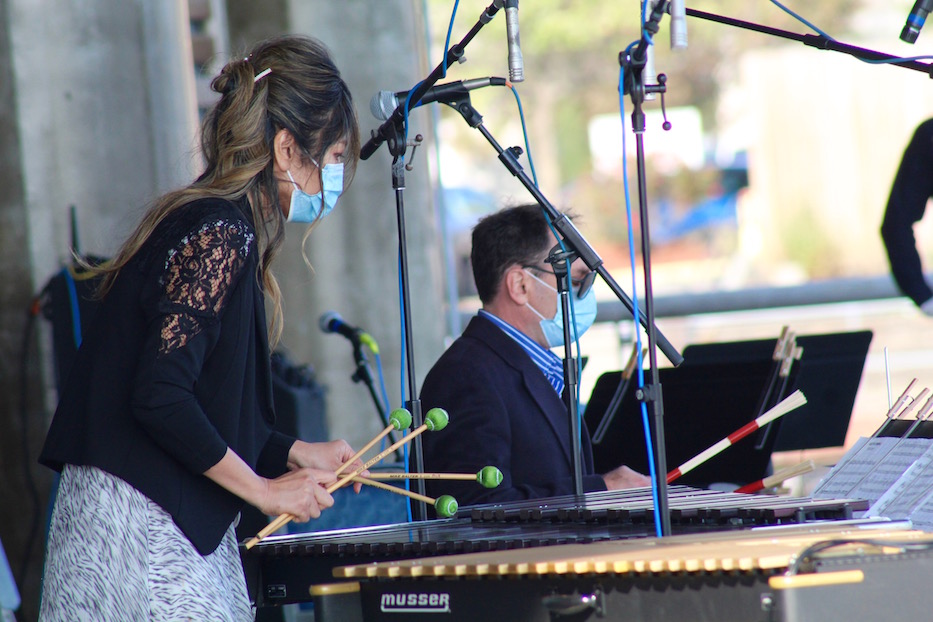
Long Wharf | Arts & Culture | New Haven Symphony Orchestra

A round, hollow tinkling rose off the marimba and hung in the air. Drums whispered a quickened reply. Without pause, the rest of the ensemble joined in: dozens of white-capped waves, percussive as they slapped into the shore. The wind carried sound over the audience, and back to the water. A chorus of gulls began to laugh in between notes.
Sunday, two ensembles from the New Haven Symphony Orchestra performed at the Canal Dock Boathouse on Long Wharf, making music together for the first time in eight months. Close to 100 people attended, masked and seated apart per COVID-19 restrictions. The organization will return next week for an hour-long set from the NHSO brass quintet.
Musicians included percussionists Aya Kaminaguchi and Michael Singer, who are also real life partners, as well as principal cellist Rebecca Patterson, assistant principal second violin Jill Pellett Levine, and section violist Millie Piekos.
“I’m really happy,” said Elaine Carroll, chief executive officer of the NHSO. “We’ve wanted to get back into the community, and it’s difficult to do that. To follow all of the rules [around COVID-19], you need to have a space that is contained. This worked for that … because we have the water.”
She added that she was moved by audience members who kept their masks on without complaint for the hour-long set as a gesture of care for the people around them. The concert came as COVID-19 cases continued to rise across the city and the state.
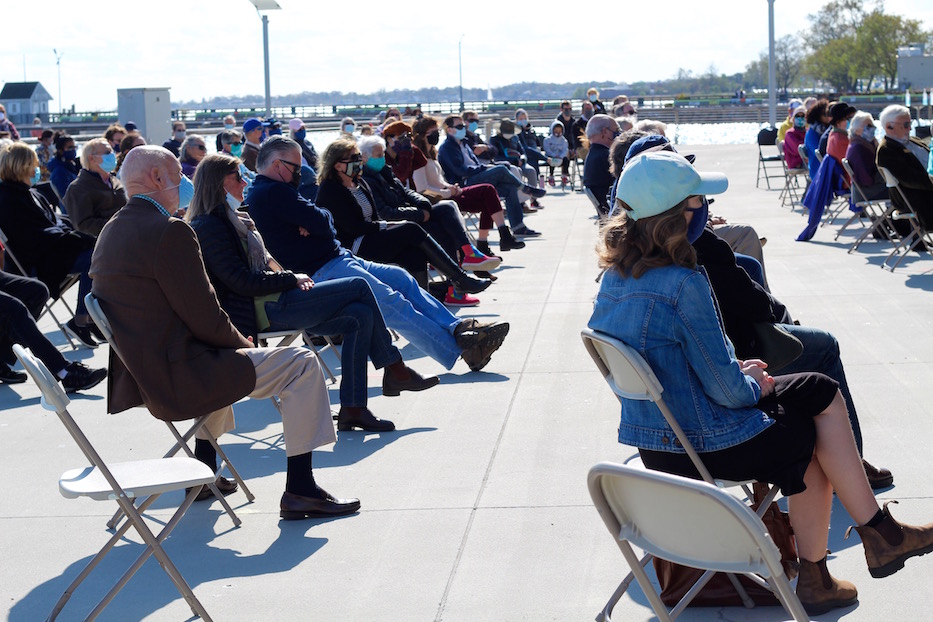
The last time all 65 members of the symphony played together was March 5, in a concert celebrating the work of composer Florence Price at Woolsey Hall. At the time, the organization was already offering a streaming option to patrons who were concerned about the novel coronavirus, then just a murmur in New Haven.
By a week later, schools were closed. The organization was scrambling with educational programming and artists’ relief. In the months since, the NHSO has presented a series of online talks, rolled out virtual programming, and held a musical festival to combat food insecurity. Carroll said members plan to return to Woolsey Hall in late January of next year, pending both public health guidance and orders from Gov. Ned Lamont. NHSO Operations Director John Leibensperger has been sitting in on talks from the Yale School of Public Health and Shoreline Arts Alliance around the safety of reopening arts venues.
The idea for the boathouse concerts were born last month, when Carroll was on-site with Patron Services Ambassador Cheri Brooks to celebrate the city’s new sculpture of William Lanson. They saw the setup: speakers placed far from the audience out front, chairs spaced six feet apart in the audience. Brooks suggested that it could be a perfect spot for musicians to play. After she and Carroll asked, the city donated the space to the symphony.
Sunday, the expanse functioned not just as a utilitarian space but also a more musically liberated one, freed from the buttoned-up, genteel expectations of Woolsey Hall. While reminders of the pandemic were everywhere—chairs spaced six feet apart, clear bottles of hand sanitizer at the entrance and 100 masked listeners—so too was a template for making music and engaging audiences safely in New Haven.
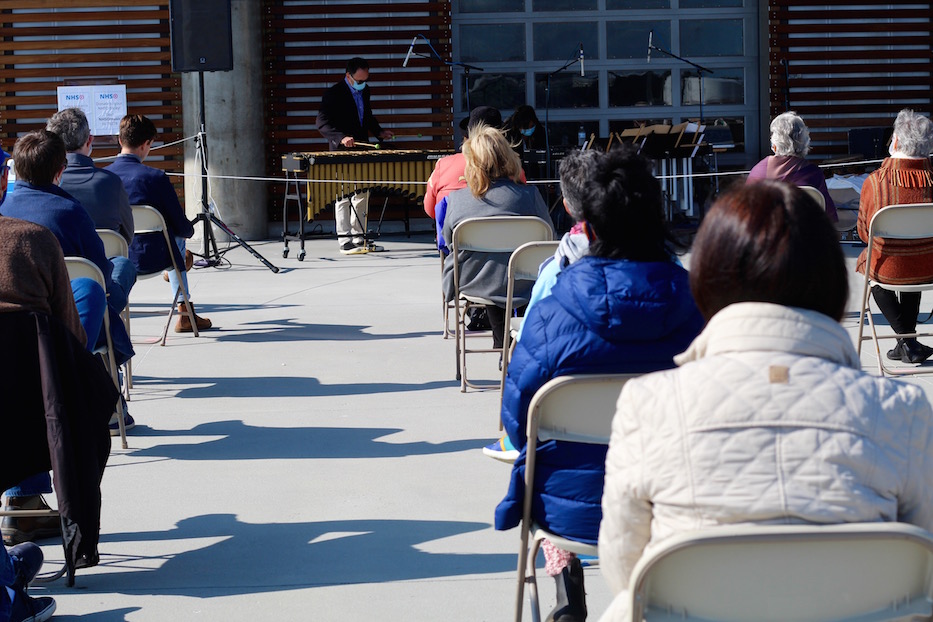
Among the two ensembles, Handel, Bach and Mozart found their way beside Scott Joplin, Michael Jackson and arrangements for marimba influenced by West African rhythms. Gone were the high, sound-swallowing ceilings of Woolsey, replaced with simple microphones placed before musicians.
That shift was palpable as Kaminaguchi and Singer took their places behind a roped-off section, playing a set that jumped from Johann Sebastian Bach’s “Sonata In G Minor—Presto,” to “Somewhere Over The Rainbow.” The two complement each other: Kaminaguchi’s touch on the instrument is delicate, sometimes feather-gentle and teasing at the note that will inevitably come next. Singer is succinct, with swift strikes that piece the air.
Both have a fierceness that lurks just beneath the surface of their work, ready to emerge when the music demands it. Kaminaguchi summoned it as she hammered out Michael Jackson’s “Smooth Criminal” with Singer on drums. With two mallets positioned gingerly in each hand, she moved to the lyrics, a live wire with flying, flexing hands at the end. Singer slipped into a solo, and the audience let the drums move from their feet up through their spines.
The musicians flirted without ever using words. A string of lyrics flew into the air—Annie are you okay? Will you tell us that you're okay?—and Singer responded with pulsing drums. The two looked from their instruments back to each other and back to their instruments.
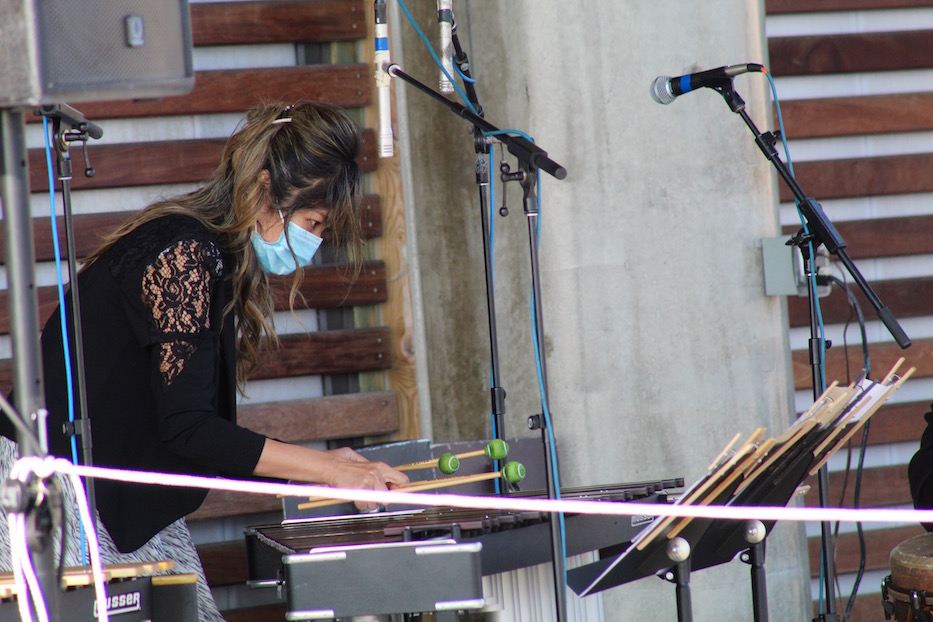
“Thank you so much for coming,” Kaminaguchi said to applause from the audience. “It’s so nice to play before a live audience. It’s been eight months. Eight months. I think I played more music when I was in preschool.”
Laughter rippled through the crowd. A few latecomers trickled in, taking seats that remained open on the sides and in the back. Ushers stood in slacks and black masks, their perfunctory nods and crinkly-eyed smiles a new shorthand for hello.
As the duet played, New Haven became a frequent ensemble member. Waves lapped and pounded around the audience. Gulls shrieked as they came in over the water and settled nearby. The wind whooshed in time with the music, sometimes strong enough to feel like a mischievous spirit was moving through the space. Dirtbikes and ATVs growled on Sargent Drive, a reminder of the city just blocks away.
That same kind of dynamism translated to the string trio, as the musicians wove in the old-old-school nautical setting with selections from Handel’s “Water Music” and later added a little romantic sparkle with Mack Gordon and Harry Warren’s “At Last.” In between, they added Joplin’s “Bethena,” where elements of waltz rise up to meet a rag.
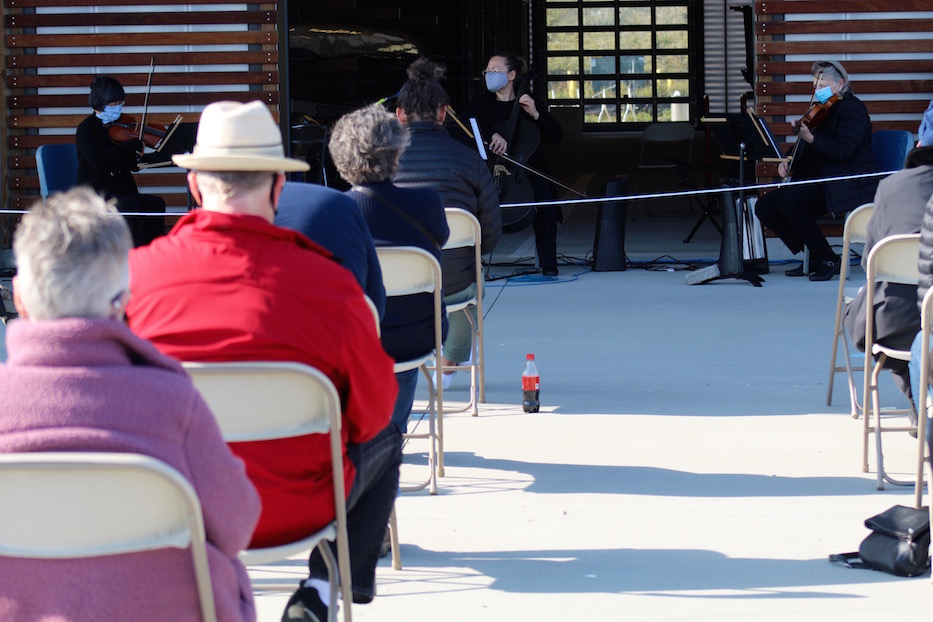
In the piece, the call-and-response of a waltz conjures a proper dance floor, instruments swirling around each other. In some other universe, a listener can almost see a dancer, bending politely forward as a partner takes the lead. As the strings picked up the piece, the sound hung low in the air before it was whisked away. There’s something meditative about the piece, which whisks a listener far away from a landscape besieged by a global pandemic.
“Oh my gosh,” Patterson said before dedicating Handel’s meditative “Passacaglia” to frontline workers and those most affected by COVID-19. “It’s so good to see you all. At the New Haven Symphony, we miss you all so much.”
New Haven welcomed them back. Instead of Woolsey’s stifled silence—creaky chairs, cough drops popped at the last minute and that perennial scent of dust and old wood polish—the city was there, ready to improvise for the 65 bodies who could not yet gather. It wasn’t a substitute for that sound, but an alternative in the meantime.
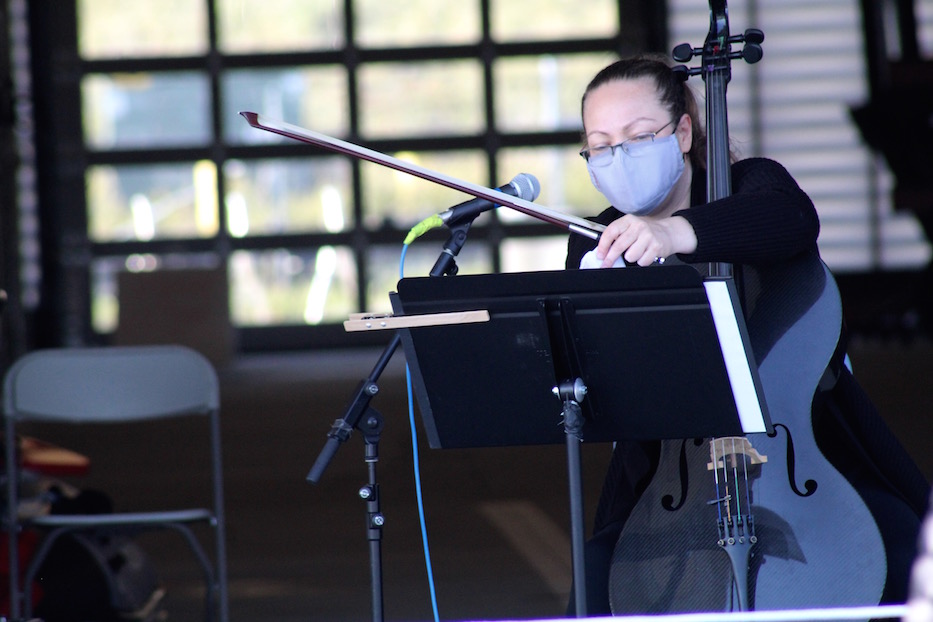
For 60 minutes, the music took over. Halfway through “Water Music,” a family of four rolled in and slid into their seats on the periphery, watching as their toddler started dancing to the music. During the final percussion portion of the concert, listeners could feel Mattias Schmitt’s Ghanaia” in their bones, the notes dancing on the wind.
The concert pointed to a shift the symphony has been embracing under Maestro Alasdair Neale. Even before the pandemic, the organization was working to bring in composers, conductors, and musicians that reflected the lived experience of all New Haveners. Now, artistic staff has been working behind the scenes on new collaborations and two not-yet-announced commissions from composers of color.
The next concert is Saturday Oct. 24 at 2 p.m. Details and ticket information are available here.

